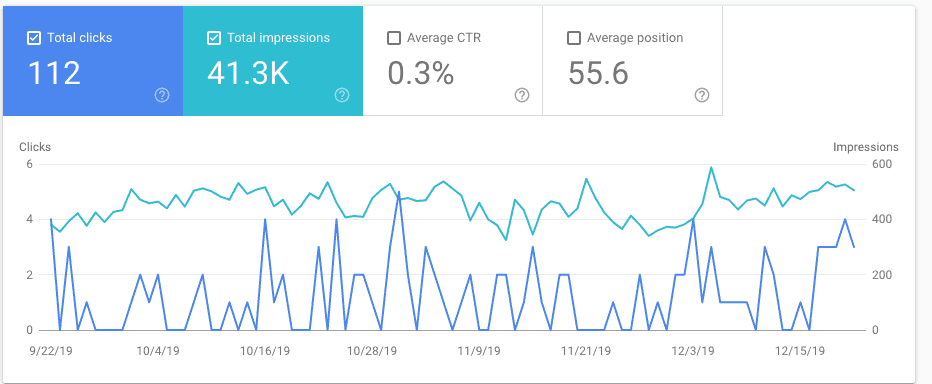SEO for Affiliates
You’ve created your blog or content but hey – nobody is visiting it. That’s where SEO (Search Engine Optimisation) comes in. Often seen as a dark art performed by people in empty basements at the back of Delhi or Krakow, SEO can be an affiliate marketer’s best friend with patience and consistent effort. SEO is something that any affiliate should regard as one of the most hard earnt but best forms of traffic they can get. Affiliate Marketing SEO can be extremely lucrative if done right.
Google is great
Let’s face it: Google rules the online world when it comes to targeted, specific website traffic with its behemoth search engine. It has and directs the kind of traffic Affiliate Marketers drool at the thought of taking just a small piece of. However, of course, Google needs content – and there’s no reason it can’t be yours.
Though SEO and Google’s Algorithms is an extremely complicated field of study, it can be grossly simplified as the following three steps.
Get your On-Page SEO right
Create great content relevant to searched keywords
Get backlinks to your amazing content from other sites.

Some people get lost in the detail of all sorts of SEO related minutia and lose site of the basic overall picture. Of course, there is considerable detail in the above three points, not to mention work, either your own or outsourced, in creating great content and doing outreach to get backlinks – it’s all up to how far you want to take it.
The first step in ‘simple Affiliate marketing SEO’ is getting your on-page SEO right. In fact, it’s best to get this step completely right before you move further otherwise you’re just wasting your effort with content and especially backlinks. Basically it’s a great idea to start this step by doing an SEO Audit, either yourself using a tool such as SEMRush (my review here) in conjunction with a link crawler like Screaming Frog (downloadable here, free or paid) or alternatively finding someone on Upwork, Fiverr or at an SEO agency to do the work for you.
If your relatively new to the field, I recommend going to a source like Fiverr and for not too high an expense getting an audit done by someone who has done it many times before. An audit checks many areas of your site, and will specifically find any major SEO issues such as the following:
Crawl issues like an incorrect robots.txt file
Thin content pages – (low word count)
Site performance issues
Broken Links
Poor use of formatting of H1, H2 heading tags
Meta description issues
Your Domain ranking
URL formation for SEO
Compression issues with gzip
Sitemap issues
Pagespeed is one of the more difficult problems to fix in SEO – if you’re based in WordPress there are a number of plugins that can help speed up your site, or you can check with your site host if they have any inbuilt caching or performance improvements they can make for you. I find wpengine to be the best host for wordpress out there, but if you’re on more of a budget, try siteground or bluehost.
Now you know what is wrong with your on-page SEO, you can go about fixing it. Something that may not get picked up directly in your audit is site structure. ‘SILO’ style construction, either physical or virtual, is definitely a major positive for categorising your content for google. It sounds mildly complicated but in simple terms it means linking similar themed content either by hyperlinks within the page or by containing similar themed content in like a directory or physical style structure. For example, in wordpress you might structure all weight loss style content on your health blog like this:
Health.com/weight-loss/lose-weight-fast
Health.com/weight-loss/exercise-guide
…
And for muscle gain content –
Health.com/muscle-gain/lift-heavy-weights
Health.com/muscle-gain/bicep-exercises
…
You get the picture. Another key feature of site structure is to make sure content, particularly key content, is not buried too far within the site itself. Ideally two or three clicks is the most it should take to get from the homepage to your best stuff.
Affiliate Marketing SEO can be done the same way as any other SEO, with the exception that you choose a niche and keywords that are relevant to the product you are affiliating. You can optimize your content and do link building in the same you would for any other content.
My experience with Affiliate Links and SEO is that if you smother your content with too many Affiliate Links, Google will penalise you with a lower page ranking. If your affiliate links are more contextual and relevant, this is not the case. So, basically, don’t go overboard.
Now you have a well-functioning SEO ready site (again, you can use a tool like Semrush to get a rating) you can start building out more content. Debate rages on exactly how long a blog post should be but to rank in Google 2,000 + words per blog post is a good rule of thumb, especially if you want to get to the top three positions where the real traffic is at. Of course, there’s no point writing brilliant content if it’s on a subject if no-one wants to read about it, so this is where good old fashioned keyword research comes in handy.
Keyword research
This is where to start with any content- and it’s important not to get lost in the maze of Google and keep your end user in mind. Volume is easily quantified, again using a tool such as Semrush or Google Adwords keyword planner, but buying intent is not so easy to put a number on and brings the humanity back into SEO. An underrated but effective simple technique is to use Semrush to search for keywords related to your niche, and then plug these into the google search box and let autocomplete find related long-tail search terms for you. This is great for finding content ideas that are being searched for. Also, it can give you a good indication about your competition – if you find a term with volume where the search results are low quality content, it’s a great opportunity to crack-fill and create a new piece of content to fill the void. This process is often known as competitor analysis; you can get a great ideal of layouts and content that is likely to be favoured by google by looking at the top 5 search results for your target keyword.

With keyword research, don’t forget the intent factor. Long-tail keywords typically represent greater buying intent, and by discovering good long-tail keywords you are able to compete with the ‘big boys’ in your niche. For example, for a pet related product such as a ‘cat training video’ which you may offer as an affiliate product or other, a basic keyword may be ‘cat training’, as opposed to a longer tail keyword such as ‘how do I train my cat’, or an even longer tail one such as ‘reviews of cheap cat training videos’. As you can see in this example, someone searching ‘reviews of cheap cat training videos’ is much more likely to be looking to buy something than someone searching ‘cat training’. This is a kind of SEO paradox as the volume of searches for the shorter term ‘cat training’ is much higher. Long tail keywords are perfect for creating good, specific content for. Apologies for my cat example- I’ve always been much more of a dog person – I’d be amazed if it’s possible to train a cat for anything other than using kitty litter and drinking milk anyway. But I digress…
So what is quality content?
There are many metrics, rules, and theories on what creates good SEO content and far too big a subject for this post. Again I’ll keep it simple and say that good quality content is good quality content; by that I mean something that people will want to read and learn from. There’s no point forcing affiliate products down peoples’ throats; anything too sales orientated especially in a blog is a turn off – you’re better off offering the reader quality information and learning to keep them engaged. This has many benefits – engaged readers are more likely to revisit, enter their contact details for offers or a subscription, and ultimately convert into customers. From an SEO perspective the reduction in Bounce rate and increase in time on page will help with page ranking. Another thing Google hates is duplicate content so forget about plagiarism it will be uncovered by Google without too much difficulty and result in a decrease of the overall SEO value of your site. Even duplicate content within your own site causes ‘bloat’, and leads to a reduction in your search value.

To explain this further, Google will allocate as little ‘crawl budget’ to your site as it can – the resources it requires to constantly trawl the enormous and only growing number of web pages out there is mind boggling, and to optimise its own effectiveness in categorising and indexing sites as you might expect it will spend as little time on your site it can. As such, you don’t want to waste Google’s time by having duplicate and unnecessary content on your site. You can either remove content or use the ‘noindex, nofollow’ meta attributes to indicate to search engines that content is not relevant.
Not all backlinks are created equal
That brings us to the third pillar of simple Affiliate SEO, building backlinks. As my heading says, not all backlinks are created equal. A backlink to your site is like a vote that Google sees as increasing the importance of your site. Unlike a democratic election some votes are worth considerably more than others and some will even have negative impact on your search rankings if google sees them as Spammy or not relevant.
In an ideal world, links should be from sites in a similar niche that have a good Domain (DR) Ranking. Domain ranking is an estimate of how well a site is regarded historically by Google as a reliable source (again, you can check the DR through a tool like SEMRush). This is all well and good, but how do you get backlinks from these kind of sites?
As you may have guessed, yes, again, it involves a bit of hard work. The textbook method for a blog, you guessed it, is to guest blog on other people’s sites and within either the article text or Author bio backlink to your own site. Make sure you ask the blog owner for a “do follow” link – this means that the link is given weight by the website owner, as opposed to a “no follow” link which signals to a search engine that the website owner does not regard the link as being worth following by a search engine.
Links, after all, are the lifeblood of SEO ranking. So now you have a simple Affiliate SEO framework and set of ‘rules of thumb’ that can get your rankings climbing without too much complexity.

So by now you’re probably familiar with competitor analysis to work out your content strategy. Find keywords, use search to check out the top five search results, get an idea of what they are banging on about, so on and so forth. There’s nothing ground breaking here. What you may not have considered however is that you can use the same simple strategy to build a link-building list. If they’ve linked to your competitor and you have now created a better, unique or different piece of content, there’s no reason with some blogger outreach you won’t be able to convince them to now link to yours. A tool such as SEMRush (did I mention SEMRush?) is great to spy on your competitors links, just type your competitor’s URL into the tool and you will get a link of their most important backlinks.
So you’ve done all of this, the final key ingredient is patience. SEO is almost never an overnight success – it can take six to eighteen months for Google to recognise your newfound SEO greatness. This patience will be rewarded – once you start getting solid SEO traffic you just won’t look back, as I said earlier in this article, it’s targeted, specific search traffic that wants to consume your content. I haven’t got the stats handy but I have heard numbers that contend that search traffic is the highest converting traffic and it’s not hard to imagine why – people are typing in search terms, finding your related, targeted content and devouring it in its entirety. Once it’s built, assuming it’s done right and that Google doesn’t drastically change their policies or get usurped by a traffic competitor, your blog will continue to get traffic, with only the need to keep content fresh and continue gaining backlinks required.
If your content is good, you may find that you will organically gain backlinks regardless. The web is always on the lookout for fresh, new stuff, if you do your research right and keep your SEO on-page factors good, other blog and content roundup people will find it and link to it in order to enhance their own content.
Of course, if you were in any doubt, yes I am an affiliate for a number of the products and tools listed in this article, so yes, I can gain financially if you click on one of my links and buy a product that is in my opinion worth using. If you do decide to use any of these tools, naturally I would love you to go through one of my links. It helps me in funding the site and creating more useful content.


[…] Learn More: guide […]